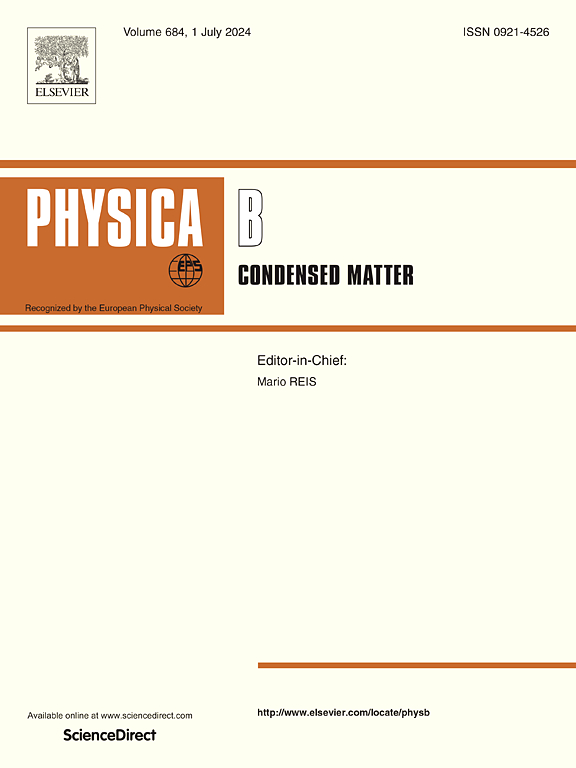Enhancing photocatalytic efficiency through silver modification of sodium and hydrogen titanate nanostructures
IF 2.8
3区 物理与天体物理
Q2 PHYSICS, CONDENSED MATTER
引用次数: 0
Abstract
This study investigates the enhancement of photocatalytic efficiency in silver-modified sodium and hydrogen titanates. Silver nanoparticles, particularly along the (201) crystal plane of sodium titanate, improve electron mobility and reduce electron-hole recombination, leading to more effective degradation of organic pollutants under light exposure. In hydrogen titanate, silver further boosts efficiency, especially under visible light, by enhancing charge separation and light absorption. The presence of silver also increases the surface area, providing more active sites for pollutant adsorption and preventing electron-hole recombination. The 5 % silver sample exhibited the highest photocatalytic efficiency, achieving the fastest degradation rate and a half-life of 35 min. In contrast, the 10 % silver sample showed reduced performance due to excessive silver loading, which caused light scattering, hindered irradiation, and trapped electrons, ultimately reducing efficiency. The key finding of the study is that silver modification significantly enhances photocatalytic efficiency, with the photocatalytic degradation of Rhodamine B (RhB) involving electron transfer from Ag nanoparticles to titanate nanosheets. However, excessive silver loading can impair performance, demonstrating the importance of optimal silver modification for maximizing photocatalytic activity. Overall, silver modification significantly improves the photocatalytic performance of both materials, enabling more efficient pollutant degradation.
银修饰钛酸钠和钛酸氢纳米结构提高光催化效率
本文研究了银修饰钛酸钠和钛酸氢的光催化效率的提高。银纳米粒子,特别是沿钛酸钠(201)晶面的银纳米粒子,提高了电子迁移率,减少了电子-空穴复合,从而在光照下更有效地降解有机污染物。在钛酸氢中,银通过增强电荷分离和光吸收进一步提高效率,特别是在可见光下。银的存在也增加了表面面积,为污染物吸附提供了更多的活性位点,并防止了电子-空穴复合。5%银样品表现出最高的光催化效率,降解速度最快,半衰期为35分钟。相比之下,10%银样品由于银负载过多而导致光散射,阻碍照射和捕获电子,最终导致效率降低。该研究的关键发现是银改性显著提高了光催化效率,光催化降解罗丹明B (RhB)涉及从银纳米粒子到钛酸盐纳米片的电子转移。然而,过量的银负载会损害性能,这表明了优化银改性对最大化光催化活性的重要性。总的来说,银改性显著提高了两种材料的光催化性能,使污染物降解更有效。
本文章由计算机程序翻译,如有差异,请以英文原文为准。
求助全文
约1分钟内获得全文
求助全文
来源期刊

Physica B-condensed Matter
物理-物理:凝聚态物理
CiteScore
4.90
自引率
7.10%
发文量
703
审稿时长
44 days
期刊介绍:
Physica B: Condensed Matter comprises all condensed matter and material physics that involve theoretical, computational and experimental work.
Papers should contain further developments and a proper discussion on the physics of experimental or theoretical results in one of the following areas:
-Magnetism
-Materials physics
-Nanostructures and nanomaterials
-Optics and optical materials
-Quantum materials
-Semiconductors
-Strongly correlated systems
-Superconductivity
-Surfaces and interfaces
 求助内容:
求助内容: 应助结果提醒方式:
应助结果提醒方式:


